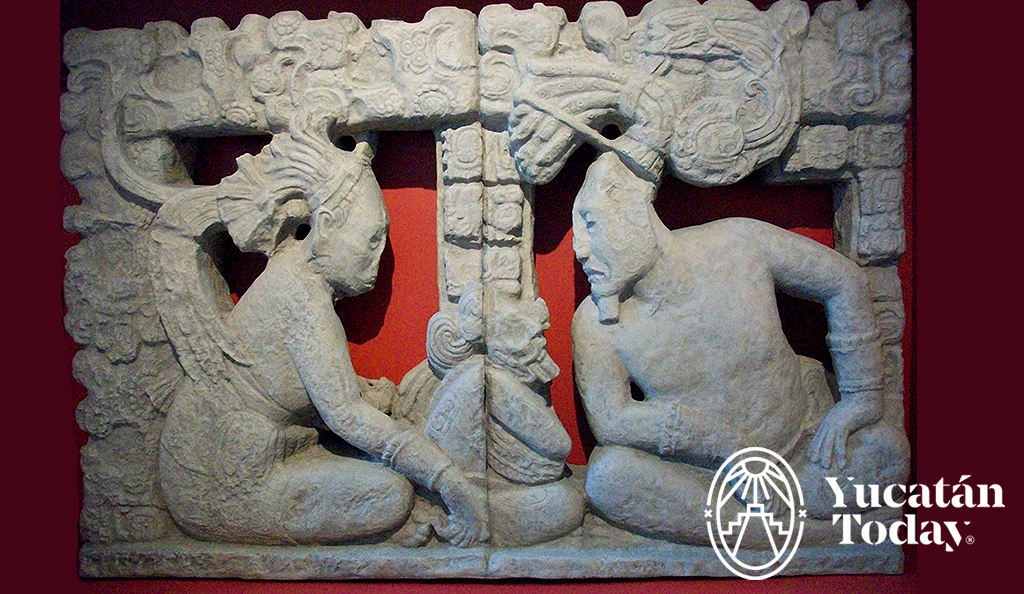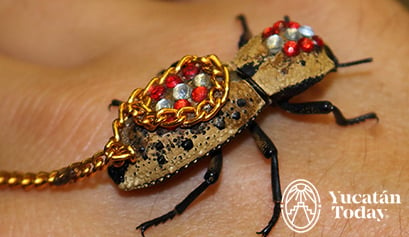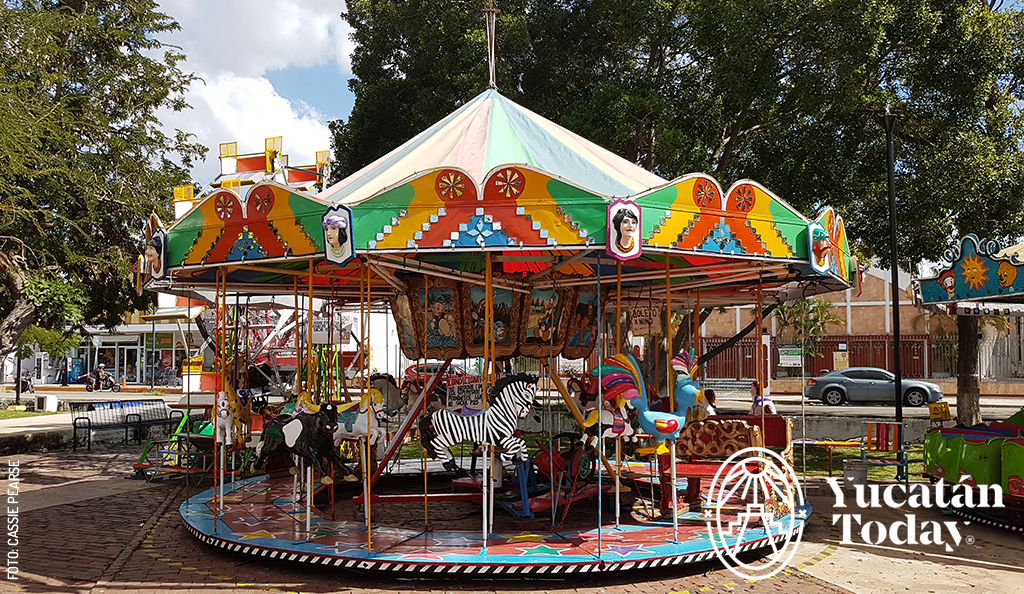
Customs and Beliefs of the Maya
Virginity, pregnancy and birth
Ixchel (e-shell) is the Maya goddess of fertility. She is also related to weaving and different phenomena having to do with the moon and flooding. She is represented as an old woman with a large clay pot full of water that she is pouring over the earth, or a woman at a loom weaving. In the Maya culture, Ixchel is the wife of Itxamna, the god of the sun.
Her temple is located on the island of Dcuzamil in the province of Ecab (today's Cozumel.) It is said that people left in canoes from Pole (today's Xcaret) and crossed the 28-mile stretch of water to the island of Dcuzamil. The people making this pilgrimage were couples wanting a child and farmers asking for a good harvest. Customs and beliefs of the Maya dealing with virginity, pregnancy and birth are numerous. The May - August 1979 issue of Revista de la Universidad de Yucatán dealt with the topic extensively.
In doing his research for this article, author Fernando Gasque Lopez found existing literature on Maya obstetrics in the pre-Columbian era, and also interviewed Maya midwives in the villages who still conserved their traditions and dogmas into the 1970s.
Author Gasque Lopez noted that to prove a woman's virginity, a rope or thin piece of clothing was folded and put around her neck. If it was easy to remove from her head, and passed her forehead easily, she was not a virgin; but if it was difficult to get off, then she was considered to be pure.
In relation to pregnancy, the author said that according to Fray Diego de Landa, the women were quite fertile and had their children at young ages. He also noted that they were quite well endowed with maternal milk for two reasons: the first being that they drank a warm drink in the mornings and the second being that because they ground corn continually and didn't wear any breast support, this made their breasts quite large and with a lot of milk.
During the first months of pregnancy, the woman received no special care and didn't really think or worry about her state. It wasn't until the fourth or fifth month that they began abdominal massages every three or four weeks to help the fetus stay in the correct position.
Generally speaking, the pregnant women didn't alter their lifestyles, and when the delivery date was near, the husbands would improvise a small room at one end of the home.
He would do this by making a curtain out of palm leaves that would be used to separate the areas. This way the future mother could have a private space during the time she was in the house.
When the moment of the birth arrived, it was important and obligatory that the husband be there to help with everything necessary. The mother-in-law was also present along with the mid-wife.
The mother-in-law would place a figure of Ixchel under the birthing mother's hammock to help ease the delivery. She would also light and place three candles in the family prayer area inviting the divine powers to help with the delivery.
During the birthing process, the mother would squat in the hammock with her legs spread apart while at the same time, hang on a rope or shawl that hung from the thatched roof rafters. The husband would help hold her up from behind while blowing air around her head to "help the child come out with his air and strength." During this time, the mother could lie down in the hammock and rest between contractions at the insistence of the mid-wife.
In conclusion, Mr. Gasque Lopez noted that Maya obstetrics were based on observation of the biological phenomenon of birth, had very little instrumentation, and relied heavily on medicinal plants and prayer to the gods. It is through these practices that one of humanity's greatest cultures, the Maya, thrived and grew to what we know today.
Related Editorials:
- The Mayas: Funeral Rituals
- Mayan Legends: The Dove
- Mayan Legends: The Man Who Sold his Soul
- Mayan Legends: The Scarecrow
- Mayan Fable: The Loyal Dog
- Mayan Legends: The Princess and the Beetle
- Mayan Legends: The Dwarf of Uxmal
- Mayan Legends: The Quail
- Mayan Legends: Zamna and the Henequen
- Mayan Myth of the Wild Man
- Mayan Myths: Lotus Flower
- Mayan Myths: Dziu and the Corn
- Mayan Myth: The Owl, Wise Counsellor
- Customs and Beliefs of the Maya

Author: Yurina Fernández Noa
Cuban journalist with a vast career at media like Diario Las Américas. Her expert, sensitive writing masterfully explores stories and traditions, unveiling diverse cultures.
¡Receive the latest articles and much more from the best of Yucatán in your email!
Related articles

Maya Legends: The Princess and the Beetle
This is the legend of a beautiful princess whose hair resembled the wings of a swallow. She was called Cuzán, the Maya word for this bird. She was...
Parks for Children in Mérida
Discover the best parks for kids in Mérida with Cassie as she shares her favorite family-friendly spots for fun and playtime in the city.



